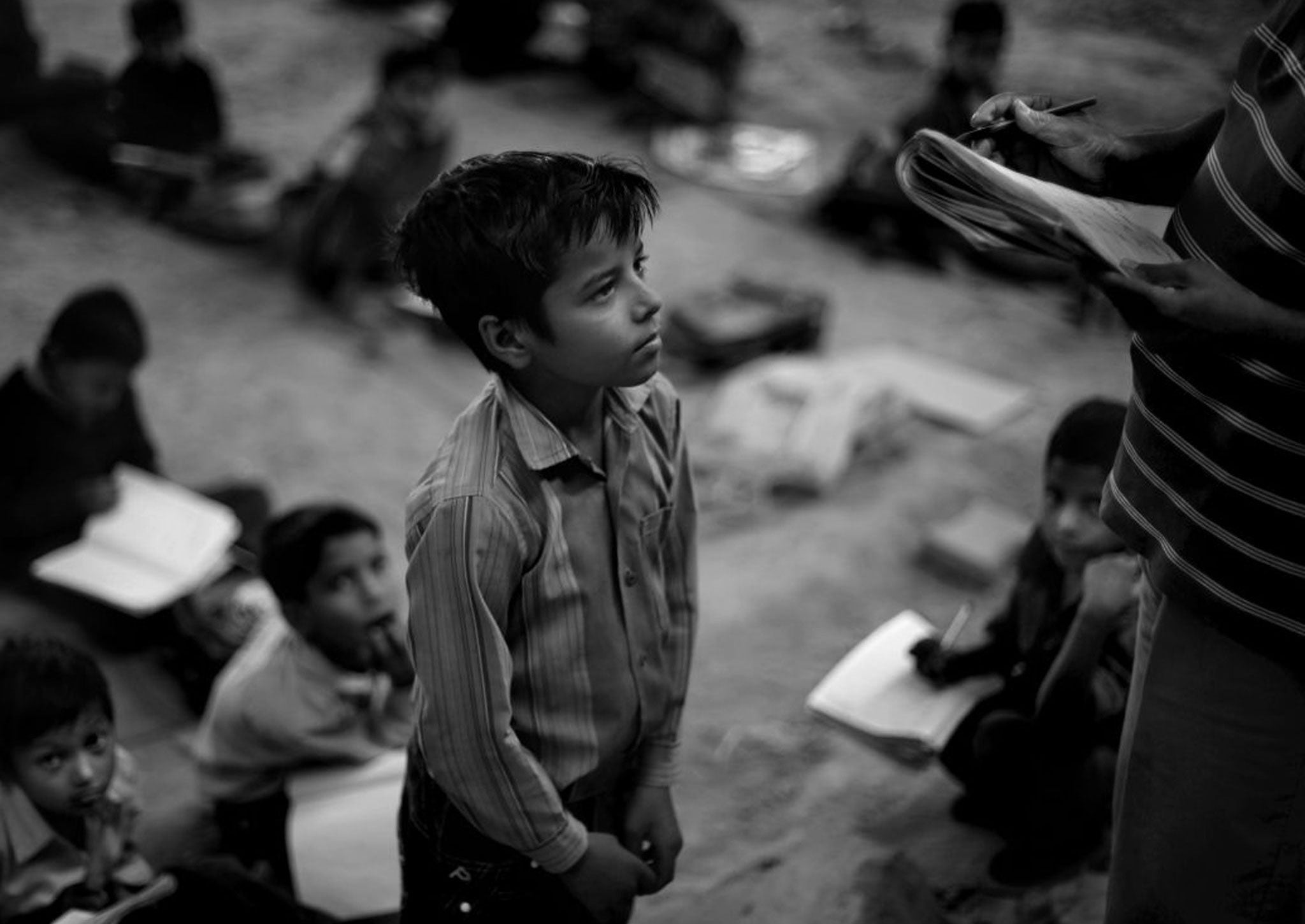This ‘school in the clouds’ teaches us a valuable lesson about learning
Letter from Asia: Can children learn with no supervision?


At a government school in south Delhi, a group of girls was clustered around a computer monitor, pointing and giggling. They had called up the Wikipedia page on the human brain and they were reading and talking, and then talking some more.
There appeared to be a disagreement over just how much the human brain weighed. A teaching assistant sat outside the classroom, next to a window, taking in events but largely letting them get on with it.
The scenes were taking place at one of seven locations that have been established – two in Britain and five in India – by Sugata Mitra, a Kolkata-born educationalist, to test his belief that given the correct environment, children can learn with little or no supervision.
Indeed, they may learn better that way. He calls his project the School in the Cloud. “At this stage my intention is not volume,” Mr Mitra, 63, said from Britain, where he is professor of educational technology at Newcastle University. “It’s more to show proof of concept.”
Mr Mitra began developing his thoughts on what he calls Sole, or the self-organised learning environment, in 1999 when he set up a computer in the wall of a poor Delhi neighbourhood and simply allowed local children to use it.
The experiment proved youngsters could quickly learn to operate a computer without any training. (His concept of self-learning was seized on by author Vikas Swarup, whose novel Q&A was adapted by Danny Boyle and made into the Oscar-winning film Slumdog Millionaire.)
Last year, Mr Mitra’s ideas received a further boost in the form of a $1m grant from the Sapling Foundation, the non-profit organisation behind the TED conferences, to allow him to trial his concept on a larger scale. His project is to be carried out over three years.
“It’s quite fashionable to say that the education system’s broken. It’s not broken. It’s wonderfully constructed,” Mr Mitra told those attending the conference in California.
“It’s just that we don’t need it any more. It’s outdated.”
He added: “My wish is to help design a future of learning by supporting children all over the world to tap into their wonder and their ability to work together.”
Among the seven schools where his “laboratories” have been set up is one in the Sunderbans, a remote area of mangrove swamps in West Bengal. The school in Delhi that has been selected is not far from the location for his original “hole in the wall” computer experiment.
Ritu Dangwal, the project co-ordinator, said India’s education system was held back by a series of factors, including poorly motivated teachers. “Around 85 per cent take up the job because it has good hours and a decent salary. Only 10 to 15 per cent take it because they love teaching.”
Another problem was the teacher-to-pupil ratio. Because of the efforts of the headteacher at the girls’ school where the School in the Cloud is being tested, there is around one teacher for every 50 pupils.
But when the girls go home at lunchtime and their places in the classroom are taken over by boys, there are just seven teachers struggling to deal with 1,200 children. “The government is not interested in giving a good education,” said the headteacher of the girls’ section.
Ms Dangwal said the sessions being trialled at this English-language-medium school (she asked that it not be named because the authorities had not fully signed off on the trial) also involved making use of “grannies”, who connect with the children via Skype.
Many of the grannies are retired teachers and could be living anywhere in India, or indeed Britain or Australia of the US. Their role is not to teach the youngsters in a formal way but to simply encourage them. Mr Mitra’s idea is that a grandparent’s traditional encouragement may be more beneficial than the chivvying or scolding from a parent or teacher.
“The children have to be in a group. There is no concept of cheating. It’s all about sharing,” said Ms Dangwal.
She said most of the girls involved in the project in Delhi belonged to poor families. Their parents were rickshaw drivers or domestic servants. Many of them were economic migrants from other parts of India.
After the session when the girls had been looking at the Wikipedia page – the “lesson” had been started with the question “What is the human brain?” – the youngsters were buzzing and enthusiastic.
“We’ve been learning about the human brain. Everything has a brain – the ant, even the donkey,” enthused 11-year-old Puja Kumari.
Mr Mitra has the backing of the female headteacher who believes that while a human teacher can never be replaced, they can be supplemented. The project has been arranged so that the girls do not miss out on their usual lessons. Their parents are also aware of the scheme.
The headteacher said that in the five months since the project had been under way, she had noticed a change in the girls taking part – emotionally, socially and in terms of their approach.
“They are thinking out of the box,” she said.
Ms Dangwal said the project would carry out tests to measure whether or not there is any improvement in reading and surfing the internet. “Instinctively we know, but we need to show it,” she said. “A clue is in their eyes. They are smiling, laughing. You don’t get that in a classroom.”

Join our commenting forum
Join thought-provoking conversations, follow other Independent readers and see their replies